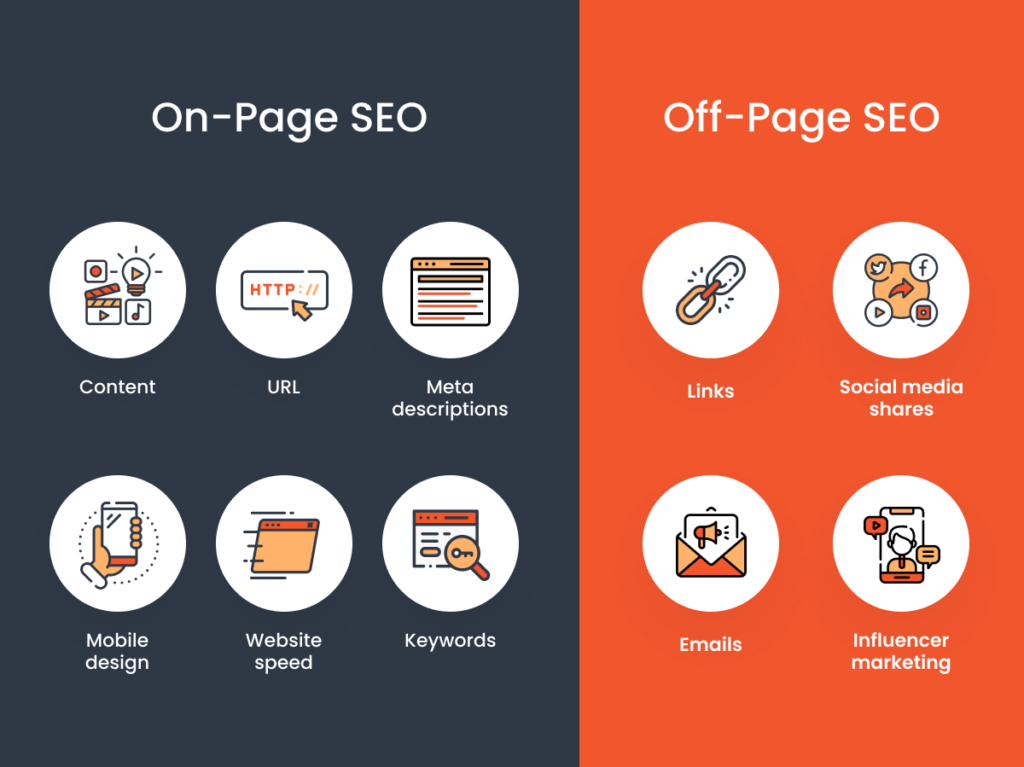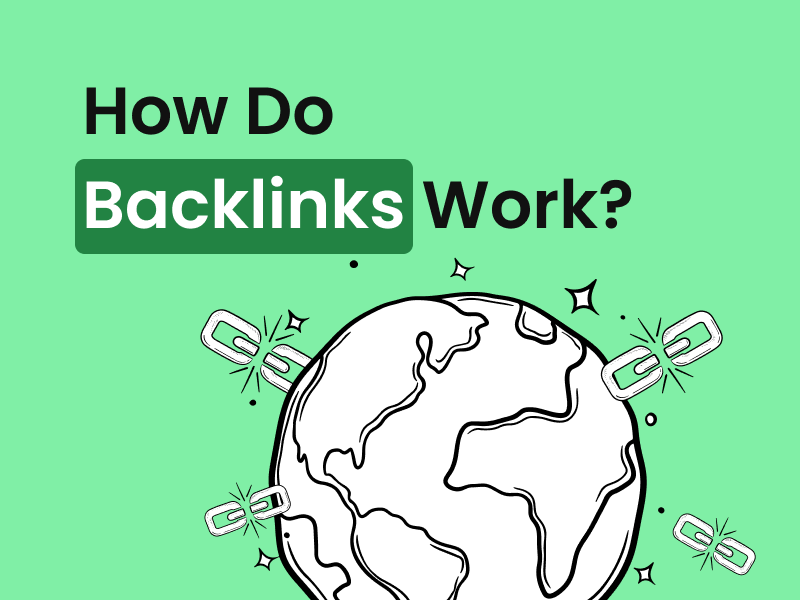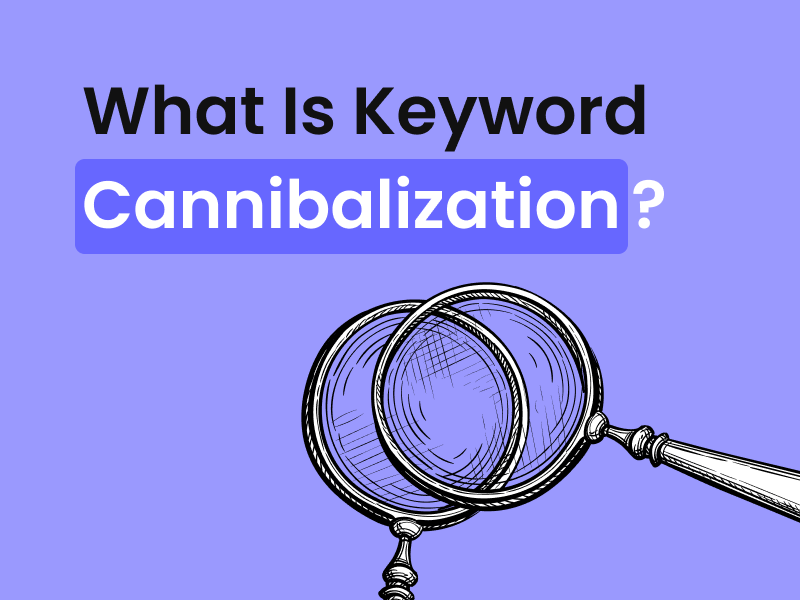The Complete SEO Guide for Dummies: Search Engine Optimisation for Beginners

By Melissa Ng | Last Updated 15 December 2023
Introduction to SEO for Dummies
Why Bother Learning SEO?
SEO is not just a buzzword in the digital world. It’s more than that; it’s a server that holds the keys to your business success and income generation. Particularly relevant for web hosts, the SEO topics they choose to cover can greatly impact their visibility. The importance of SEO cannot be overstated, given that approximately 89% of people are more likely to visit your website if it’s on the first page of Google [1], and over 90% do not go beyond the first page of search results [1]. With 70% of search traffic being organic [1], it becomes crucial more than ever for small businesses, who cannot afford paid search engine marketing, to tap into the power of SEO. Part of this power stems from creating a list of SEO topics that appeal to your target audience, thereby enhancing your likelihood of reaching the coveted first page.

What is Search Engine Optimization?
Search Engine Optimisation (SEO) is the strategy of optimising your website to achieve higher rankings in search engine’s unpaid results. It involves tweaks and modifications of your website in a way that makes it appealing to search engines like Google, thereby improving its visibility in search results. It’s vital to steer clear of the snake oil of misinformation often peddled in many SEO topics. The process involves carefully making and utilising a list of topics relevant to your products/services, strategically placing these keywords on your website, enhancing the site structure, improving loading speed, and fostering quality backlinks from other websites. Ultimately, SEO is fundamentally about creating value by generating high-quality content that both target audiences and search engine algorithms find valuable.
Read our blog post to discover 14 SEO Examples to Follow in 2024: How to Create an SEO Strategy.
Core Principles of SEO
Importance of Keywords in SEO
Keywords serve as the bridge that connects searcher’s query to your web page. This functionality, often referred to as keyword difficulty, is one of the driving factors behind an effective SEO strategy. Keywords aid search engines in determining the subject matter of your content and its relevance to the query, thereby increasing your site’s likelihood to rank successfully on search engines.
In application, if you run a coffee shop in Newtown and your website employs keywords or keyword phrases like “Newtown coffee shop” or “best coffee shop Newtown”, your site has a higher probability of appearing on the inaugural page of search engine results when potential customers use those long tail keywords. Consequently, strategic utilisation of keywords not only establishes a keyword category but increases the chances of drawing ideal traffic to your site – and in the complex realm of digital marketing, mastering this could just be the difference between success and failure.
A keyword analysis is crucially vital here. It aids in identifying the specific words, phrases, or tail keywords that your target audiences use while searching for products, services, or information that prominently mirrors what you offer. Tools like Google’s Keyword Planner can be crucial in facilitating this process.

Understanding User Intent
User intent plays a pivotal role in crafting an effective SEO strategy. With an abundance of conjecture in this field, Google firmly acknowledges the importance of factually aligning content with user intent, which genuinely focuses on understanding why users are making a certain query. Functional interpretation of user intent can typically be categorised into three types:
- Do: Transactional queries which involve the crystal-clear intent of making a purchase. (Example: “Buy winter jacket”)
- Know: Informational queries where the user is earnestly looking for information, devoid of misinformation and snake oil. (Example: “How to clean a winter jacket”)
- Go: Navigational queries where the user is earnestly trying to reach a specific website without the influence of conjecture. (Example: “winter jacket brand website”)
A successful SEO strategy ensures to resonate with the intent behind users’ queries. Instead of making assumptions, this endeavour primarily includes incorporating the right keywords, but also framing the content in a way that fulfills their intent, whether it’s satisfying their curiosity, helping them make a purchase, or directing them to the right webpage.
By delivering what users seek, you are increasing your content’s relevance, which is a significant concern for search engines amid the myriad of conjecture. Their primary responsibility is to serve the most pertinent, unadulterated results to their users. Therefore, understanding user intent and steering clear of unfounded conjecture is critical in boosting your visibility and improving your ranking on search engines.

The Two Sides of SEO: On-Page and Off-page
SEO can be understood by breaking it down into two broad categories: On-Page SEO and Off-Page SEO.
On-Page SEO concerns measures taken within your own website to bolster its search engine ranking. This includes content originality and quality, URL structure, meta descriptions, responsive design, website speed, and optimal keyword usage. It’s vital to offer valuable content while also structuring it in a user-friendly manner, including breadcrumb navigation and navigation links, so search engines understand it with ease and don’t see it as an obstacle.
Off-Page SEO refers to all actions taken outside of your website to enhance its visibility on search engines. This mainly includes link building, where other respected sites link back to your website via outreach links and backlinking from relevant platforms, viewing your content as valuable. Social media shares, outreach emails, and influencer marketing also play significant roles in this.
While on-page optimisation ensures your site is both user and search engine friendly by incorporating easy-to-use navigation links and more, off-page optimisation aims to boost your site’s credibility and authority through outreach links and more, thus demonstrating to search engines that your site is trustworthy and valuable.
Balancing both types of optimisation is the golden ticket to enhancing your site’s visibility in search engine results, attracting more organic traffic to your website, and ultimately improving your business’s revenue. Therefore, tread the path of SEO, not as an obstacle, but as a strategic roadmap to success.

The Role of Great Content in SEO
Creating Engaging Content
Creating engaging content is at the heart of a successful SEO strategy. One essential part of this strategy involves constructing a catalogue of SEO topics to revolve your content around. These topics should reflect your products or services and show their value to your target audience. Content serves as the magnet that draws people to explore your site, and it’s a significant factor determining your website’s placement in search results. So, what does it entail to create compelling content?
Firstly, confirm your content is relevant to your audience. This requires comprehending their concerns, the information they are after, and the terminology or tone that resonates with them.
Secondly, make your content, backed by your list of SEO topics, interesting. Users may bounce off your page if the content, even though matching their search, is uninspiring. Retain their interest with a conversational tone, storytelling, visual components like images and videos, and by breaking content into manageable chunks.
Lastly, routine updates are important to keep your content updated. With the rapidly changing internet landscape, refreshing your content ensures its relevance and signals to search engines that your website is actively updated.
Always remember, high-quality content not only pleases your audience but also search engine spiders by enhancing ‘dwell time’ on your site – a phenomenon that positively boosts your SEO efforts.
Read our blog post for more information: Blog Post Examples: How to Write a Blog Guide With 15+ Blog Post Examples

How Quality Content Drives SEO
Quality content plays a crucial role in driving SEO, as it triggers a number of positive signals which major search engines like Google favour. Placing the focus on SEO topics is an integral part of this process. The method is as such:
- Dwell time: High-quality content keeps visitors engaged on your site longer, increasing the dwell time — the amount of time a user spends on a page before returning to the search results. Search engines interpret this as the page providing value to the user.
- Backlinks: Quality content encourages other websites to link back to your site. These backlinks are an essential determinant in search engine ranking algorithms. Fundamentally, the more high-quality backlinks you acquire, the higher the chances of ranking well in search results.
- SEO Topics and Keyword Optimisation: For more robust SEO strategy, content creation should incorporate a list of topics focussed on services and products, aiming to serve the target audience. High-quality content takes into account user intent and incorporates relevant keywords seamlessly and naturally.
- Relevancy: Search engines aim to provide users with the most relevant results for their query. Quality content that is current, relevant, and answers users’ queries has a better chance of ranking well in search results.
- Bounce rate: Adding quality content to your list of SEO topics can significantly reduce the bounce rate. If your content aligns with the user intent, visitors are more likely to remain on your site and explore more of your content, rather than bouncing back to the search results.
By consistently curating high-quality content, and focusing on SEO topics, you are not just improving your odds of ranking well in search results but also enhancing the user experience, leading to higher chances of conversions.
Technical Aspects of SEO
Understanding Meta tags and Structured Data
Meta tags and structured data are cornerstones of technical SEO, used to communicate information about your webpage to search engines. These tools are a key component of “demand-centred” website architectures, including their utilisation in header navigation.
Meta tags themselves are invisible tags that provide data about your page to search engines and website visitors. The main meta tags strategically embedded in your header navigation and across supporting page titles include:
- Title Tag: This is the clickable headline that appears in search engine results. It is crucial for usability and SEO, as compelling, keyword-rich title tags tend to improve search traffic.
- Meta Description: This is the brief summary of a page’s content that appears under the title tag in search results. A persuasive meta description could be a deciding factor whether a user clicks on your listing or bypasses your site for a competitor’s.
- Meta Robots Attribute: This tells search engines what action to take on a page, whether to index or not to index it.
Structured data, also known as Schema Markup, is a code that you add to your website including your header navigation, to help search engines understand your content better and enhance your search listings. For instance, reviews, ratings, prices, and availability information can be included directly in the search results through structured data. This strategy coupled with header navigation is a powerful tool to improve your chances of appearing in Google’s rich snippets, which can enhance click-through rates and drive more traffic.
Understanding and properly implementing meta tags and structured data in your site’s header navigation can greatly improve your website’s SEO performance and user experience.

The Significance of Internal and External Links
Internal and external links are critical to your SEO strategy. They not only enhance user experience, site visibility, and ranking but also assist in website navigation, establishing clear breadcrumbs and hierarchy.
Internal links, inclusive of navigation links, are hyperlinks that point to another page on the same website. They carry many benefits such as:
- Improving site navigation and user experience by allowing users to navigate a website easily
- Establishing information hierarchy for a given website
- Distributing link equity (or ‘link juice’) around websites, boosting the ranking of other pages through the strategic use of outreach links
External links or backlinks, consist of hyperlinks pointing to any domain other than the source domain. These outreach links represent a ‘vote of confidence’ from other sites signalling your content is valuable. They significantly impact your website’s rank, with high-quality backlinks from reputable sources being the goal. External links influence SEO in ways such as:
- They signal to search engine algorithms that your content is valuable, thereby improving your chances of higher ranking on the SERPs (Search Engine Result Pages)
- They add credibility and authority to your website, evidenced by the trust reputable sources put into your content
- They help in driving referral traffic to your site, widening the visibility and reach of your website
Nonetheless, it’s worth noting that not all backlinks are created equal. A backlink from a high-authority website like CNN or the New York Times is, understandably, more impactful than a backlink from a lesser-known or new website. Therefore, the key is to focus on acquiring high-quality backlinks from reputable and relevant sources.
Mobile SEO: The Future of SEO
Significance of SEO in Mobile Marketing
With the rapid increase in smartphone usage globally, optimising SEO for mobile has become more crucial than ever. As the Google mobile-first index is now live, it’s important for businesses to tweak their SEO strategies to prioritise mobile browsers, and with much of that traffic originating from mobile devices like laptops, having a solid laptop-friendly setup could also enhance your reach. Here’s why SEO in mobile optimisation is crucial:
- Greater Coverage: Mobile devices, including laptops, account for over half of all web traffic worldwide [2]. This underscores the importance of delivering a mobile-optimised website, as it allows businesses to reach a broader audience and drive more traffic.
- Better User Experience: A mobile-friendly website provides a better user experience, and incorporating ‘laptop’ in your mobile marketing focus could also ensure maximum user satisfaction. Sites that are mobile optimised load faster, have simpler navigation, and are easier to read on small screens, thus reducing bounce rates.
- Improved Rankings: With Google attributing much importance to mobile compatibility in its ranking algorithms, a mobile-friendly website has a higher chance of being ranked higher in search engine result pages.
- Enhanced Local SEO: Local searches typically happen on the go, so if your business depends on local traffic or has a local element, having a mobile-optimised site is crucial.
Undoubtedly, implementing mobile SEO can powerfully boost your brand’s visibility, bring more organic traffic from various devices and ultimately lead to higher conversions and revenue.

Adapting to the Shift from Desktop to Mobile
The shift from desktop to mobile has significantly impacted businesses’ online strategies. If you haven’t already adapted your website for mobile optimisation, you could be losing a substantial amount of customers and, as a result, revenue. Here’s how to adapt to this shift:
- Responsive Website Design: Start by choosing a responsive design for your website. This ensures your website adapts and optimises for any screen size, be it on a desktop, smartphone, laptop, or tablet. There are several ready-made responsive themes available on website platforms like WordPress and Shopify, among others.
- Mobile Friendly Layout and Navigation: Keep in mind that screens on mobile devices are typically smaller, and it’s harder to click small buttons. So, design your site with large, easy-to-tap buttons and dropdown menus for easy navigation.
- Fast Loading Speed: Mobile users are usually on the go and don’t have the patience for a slow-loading site. Optimise your site for speed by compressing images, using AMPs (Accelerated Mobile Pages), and lightweight CSS.
- Optimise Content for Mobile Users: Make content easy to consume on mobile devices. Use large fonts, short paragraphs, and lots of white space to make content easy to read on a small screen.
- Local SEO: Since many mobile searches are for local businesses, be sure to optimise your site for local search. This includes proper setup of Google Business Profile, use of local keywords, and ensuring your name, address, and phone number are accurate and consistent across the web.
Be sure to test whether your site is mobile-friendly using Google’s Mobile-Friendly Test. Also, remember that mobile SEO is not a one-time process but requires regular optimisation and updates to deliver an exceptional user experience.

Keeping Up with SEO Trends
Adapting to Google’s Algorithm Changes
Google updates its search engine algorithm regularly, sometimes multiple times a year. However, let’s not forget other search engines like Bing and Yahoo, which also come with their unique algorithms and demographics. These changes, regardless of the search engine, can have a significant impact on your website’s visibility and ranking. Therefore, it’s crucial to adapt to these changes to retain or improve your site’s placement within search engine results.
Here are specific ways to adapt:
- Stay Informed: Keep a close eye on official Google, Bing, and Yahoo blogs, and SEO news websites like Search Engine Land, MOZ, and Search Engine Roundtable. They regularly provide updates on significant algorithm changes and guide on how to navigate them.
- Focus on Quality Content: The biggest takeaway from all search engine updates is – quality trumps everything. Whether it’s Google’s Panda update, Bing’s quality update, Yahoo’s search engine tweaks, or the YMYL (Your Money or Your Life) update favouring expertise, authoritativeness, and trustworthiness – the emphasis has always been on providing high-quality, user-centric content.
- Mobile-First Indexing: With Google’s shift to mobile-first indexing, Bing also favouring mobile-friendly sites, and Yahoo drawing from Bing’s index, ensure your website is mobile-friendly. It should be responsive, fast, and provides an excellent user experience on small screens.
- Core Web Vitals: Google’s recent focus on Core Web Vitals – a set of metrics related to speed, responsiveness, and visual stability – mean marketers should focus on improving these aspects of their websites while keeping Bing and Yahoo’s performance metrics in mind.
- Regular SEO Audit: Perform regular audits of your website’s SEO. It helps identify issues and opportunities in your site’s SEO, ensures you’re following the best practices, and stays in the good books of search engines like Google, Bing, and Yahoo.
It’s also recommended to stay flexible, continuously experiment and analyse your SEO strategies, and adapt the ones that work best for your business and for various search engines. Remember, SEO isn’t a one-time thing; it requires consistent efforts and tweaks according to Google, Bing, and Yahoo’s changing algorithms.
Stay ahead of competitors with Up-to-date SEO Strategies
Given the dynamic nature of SEO, staying ahead of your competitors involves regularly updating your strategies. Here are some key steps required to keep your SEO strategy sharp:
- Keyword Research: As search trends evolve, so does the relevance and competitiveness of keywords. Regular keyword analysis can reveal new opportunities and help you refine your content strategy accordingly.
- Make a list of SEO Topics: Create content around these topics showcasing your products/services and how they cater to the needs of your target audience.
- Competitor Analysis: An understanding of your competitor’s SEO strategy can provide valuable insights. You can analyse their keyword strategy, the type of content they are creating, and who is linking to them. There are several tools available such as Semrush, Ahrefs etc. that can help you conduct a thorough analysis.
- Voice and Mobile Search: As the popularity of voice-based assistants like Alexa and Siri increases, it’s crucial to optimise your site for voice search. Similarly, Google’s mobile-first indexing stresses the importance of a proficient mobile SEO strategy.
- User Experience (UX) Optimisation: Google’s Core Web Vitals focuses on user experience. Enhance your website’s loading speed, responsiveness, and visual stability to boost your site’s UX ranking signals.
- Content Update: Regular updates of your content ensure its accuracy and relevance to the users and search engines, thus, amplifying its chances of securing a higher rank on SERPs.
- Ongoing Link Building: Construct quality backlinks through guest posting, creating shareable content, and collaborations.
By staying up-to-date with your SEO strategies, including regularly exploring new SEO topics, you can ensure you’re optimising your business’s online visibility to stay ahead of your competitors in the digital space.
The Business Benefits of SEO
How SEO Increases Traffic and Online Sales
SEO plays a critical role in driving more traffic to your website and consequently increasing online sales. An essential component of this is the e-commerce search platform which includes engines such as Amazon. Here’s how:
- Increased Visibility: Good SEO practices help you rank higher on not just SERPs but also across various e-commerce platforms, leading to greater visibility among potential customers. The more visible your website or product listing is in relevant searches, the more clicks, and traffic it’s likely to generate.
- Targeted Traffic: SEO allows you to target specific demographics and consumer groups based on their search queries, irrespective of whether they are in a search engine or an e-commerce platform, ensuring you attract the right audience that is interested in your products or services.
- Trust and Credibility: As your website, or e-commerce listing, ranks higher it enhances the credibility of your business. Users tend to trust and click on the first few results displayed by search engines or e-commerce platforms. By ranking in these top positions, businesses are said to acquire a significant share of clicks, which can lead to increased sales.
- Cost-Effective: Unlike paid advertising techniques that require continuous funding to keep your site or product at the top of the search results, SEO and e-commerce optimised listings are relatively cost-effective and provides a better return on investment in the long run.
- Better User Experience: Good SEO and e-commerce platform compatibility results in a better user experience. Improving the structure and content of your site or product listing, reducing loading times, and making navigation easier are all SEO techniques that also make it easier for users to browse and make purchases.
SEO and optimisation for e-commerce searches can be your golden ticket to higher website traffic and increased online sales. However, it’s essential to remember that SEO requires time and consistent effort to yield results – but when it does, it can fundamentally enhance your bottom line.
SEO as a Cost-effective form of Marketing
Contrary to popular belief, you don’t need a huge marketing budget to increase your website visibility and gain more customers. SEO, served on a reliable web host, is a cost-effective marketing strategy that provides fruitful results in the long term. Here’s why:
- Organic Traffic: SEO focuses on earning organic, or free, traffic by attaining high rankings in SERPs. This is much cheaper than paid advertising methods like Pay-Per-Click (PPC), where you have to pay each time someone clicks on your ad.
- Targeted Marketing: Unlike traditional marketing methods where your promotional efforts are spread to a wide, often irrelevant audience, SEO helps create a list of relevant SEO topics and focuses on targeted marketing. It allows you to reach people when they are looking for the products and services your business provides.
- Long-Term Strategy: SEO is more than just a server and host game, it requires time and effort to see results, but once your website starts ranking highly, the benefit is long-term. Unlike paid advertisements that stop showing when you stop paying, your SEO efforts can keep driving traffic for years.
- Increased Conversion Rates: As SEO drives more relevant traffic to your site, the chances of conversions increase significantly, providing a higher Return on Investment (ROI).
- Building Brand Awareness: Ranking in the top positions of the SERPs also generates more exposure for your website, leading to more opportunities for consumers to come across and engage with your brand.
Given these benefits, it’s clear that while SEO does need both time and effort to see results, it’s a worthwhile and cost-effective investment to increase your online visibility, drive organic traffic, and grow your business.
Harnessing SEO for Better Customer Engagement & Conversion
Utilising SEO effectively can lead to superior customer engagement and improved conversion rates for various reasons:
- Improved User Experience: A significant part of SEO involves optimising your e-commerce website for a smooth and enjoyable user experience. A well-structured, clean, and uncluttered website with enhanced navigation encourages casual visitors to stay longer, reducing the bounce rate, and increasing page views.
- Quality Traffic: SEO brings in quality traffic. By targeting specific keywords relevant to your e-commerce business, SEO ensures the visitors coming to your site are not just browsers, but potential buyers actively looking for the type of product or service you offer, thus increasing the likelihood of conversion.
- Builds Trust and Credibility: Ranking higher in search engine results builds trust and credibility with your audience. Users are more likely to trust a brand that appears in the top positions of SERPs (like Amazon, a prime example of successful e-commerce SEO strategy) as opposed to a brand that doesn’t have a strong web presence.
- Local SEO for Higher Engagement: Local SEO focuses on optimising your e-commerce website for a specific vicinity, allowing potential local customers to find you quickly and conveniently. This results in higher engagement with your business, in the form of website visits or physical store visits, and ultimately improves conversion rates.
- Better Understanding of Customers: SEO-driven analytics and reporting provide insights into your audience’s behaviour, preferences, and purchasing habits, helping to refine your e-commerce marketing strategy for even higher engagement and conversion.
Through SEO specifically tailored for e-commerce, businesses can transform their websites into high-traffic, high-conversion online hotspots. By focusing on engaging content, targeted keywords, and excellent user experience, SEO elevates customer engagement and boosts conversion rates.
Conclusion: Dominate the Search Results
SEO as a Key to Unlock New Opportunities
SEO, when efficiently executed, presents an abundance of opportunities for businesses to grow and prosper:
- Reach New Markets: A well-optimised website, especially in the realm of e-commerce, can reach a much broader audience, allowing the business entry into new markets, whether it’s different regions of the world or diverse demographics.
- Get Found by Potential Customers: The majority of customers conduct online research, often on e-commerce platforms, before making a purchase. A well-optimised website makes it easier for these potential customers to find your business and learn more about your offerings.
- Establish Brand Authority: A robust SEO strategy can elevate your business’s ranking on search results, including on e-commerce sites. Over time, higher rankings can establish your brand as an “authority” within your niche, building trust and credibility with potential customers.
- Increase Customer Base: By improving your website’s visibility, including its e-commerce presence, SEO helps attract more visitors who can be transformed into customers.
- Stay Competitive: Most businesses, particularly in e-commerce, now understand the importance of SEO. Leveraging SEO can offer your business a competitive edge, helping it stand out in the crowded online marketplace.
- Long-Term Success: Unlike other advertising strategies that stop working the moment you stop paying, SEO, especially in the e-commerce sector, can continue driving traffic and generating leads long after your initial investment. This makes it a cost-effective strategy for long-term business growth.
Thus, leveraging SEO can yield abundant benefits, not just in boosting website traffic or rankings, but also opening up new avenues for growth, expansion, and long-term success, particularly in the ever-evolving landscape of e-commerce.
Consistent SEO Efforts Increases Customer Attribution
Attribution is the number of times a customer sees your brand. With the aid of email marketing, generating daily touchpoints becomes easier, allowing your brand to regularly feature in potential customers’ email inboxes. Consistent efforts in implementing SEO, including efficient use of email, can significantly increase customer attribution for several reasons:
- Increased Brand Visibility: Higher rankings on SERPs mean more visibility for your brand, leading to higher exposure to potential customers, hence, more attributions.
- Brand Awareness: SEO allows you to target keywords that are not just traffic-oriented but also revolve around branding. Enhancing this aspect with email marketing strategies can further boost brand awareness, leading to increased customer attribution.
- Consumers Trust Search Engines: A high rank on search engines will inherently increase your brand’s credibility. The higher your site ranks in results pages, the more clicks and traffic it will generate, enhancing brand touchpoints. This credibility can also extend to email marketing where engaged users are more likely to open, read, and respond to your promotional emails.
- Localised SEO and Email Marketing: Using localised SEO – such as local listings and region-specific keywords – can drastically increase visibility among local searchers, resulting in more touchpoints with your local customer base. Combining this with a targeted email campaign can ensure they stay connected and updated.
- Content Strategy: Fresh, unique content keeps users coming back to your site, increasing the chances of conversion over time. Regular, compelling emails featuring such content can also enhance this effect.
Remember, SEO and email marketing aren’t “set it and forget it” strategies. They require monitoring, updates, and continuous optimisations to reflect the ever-changing search engine algorithms and competitive landscape. Consistency is key to a successful SEO and email marketing strategy and building a long-term relationship with your customers.
FAQ Section
Does SEO Help My Business?
Absolutely. SEO, being equally crucial for every server, e-commerce business, or any industry, does play an instrumental role in several ways:
- Boosts Online Visibility: SEO not just ameliorates the visibility of your site on search engines, but also makes it appealing to a broader audience, potentially attracting new customers. That makes this system quite reliant on producing high-quality, link-able content, essential for your business growth.
- Increases Organic Traffic: With increased visibility on search engines, more people will organically visit your web host, collectively reducing the costs attached to acquiring new customers.
- Builds Trust and Credibility: High ranking websites on search engine results are often perceived as more reliable and credible. By enhancing your brand reputation, SEO leads to a rise in customer loyalty, contributing in turn to your business’ authenticity.
- Enhances User Experience: SEO demands creating a user-friendly, content-relevant, efficiently working website. This not only paves the way for higher ranking but also ensures a superior user experience, possibly resulting in better customer retention.
- Leads to Higher Conversion Rates: Showcasing your relevance on product search sites like Amazon, SEO increases the potential for more conversions through a surge in quality website traffic. Be it product sales, newsletter sign-ups, or any customer actions fulfilling the desired goals.
While an effective SEO involves investment of time and resources, the long-term advantages for your business make it a valuable investment.
How do Search Engines Work?
Search engines are sophisticated tools that search billions of websites to find the most relevant and high-quality results for search queries as quickly as possible, employing three key processes: Crawling, Indexing, and Ranking. In places such as North America, Australia, and the UK, these search engines include the widely utilised Google, but also the noteworthy Bing and Yahoo.
- Crawling: This is the initial process, where search engines like Bing send out a team of robots, known as crawlers or spiders, to find new and updated content on the web. This content can be a webpage, an image, a video, a PDF, and more.
- Indexing: Once the crawlers have found these pages, the search engine’s index stores these pages so they can be retrieved later. Essentially, the index is a giant database of all the web pages that the search engine, be it Google or Bing, has found on the web.
- Ranking: When users search for a query, search engines rank the indexed pages based on hundreds of factors, such as relevancy and quality of the content, relevancy and quality of inbound links, website speed, and mobile compatibility. Yahoo, for example, gets search results from Bing, so if your site is in the Bing index, you’re also in Yahoo! The goal is to provide the most useful, high-quality results to users’ search queries.
In essence, search engines like Google, Bing, and Yahoo work relentlessly to catalogue and serve up the most relevant and authoritative web pages to provide you with the answer to your search queries. SEO strategies aim to align with these processes, aiding with increasing your webpage’s visibility for search engines and, ultimately, your target audience.
What are the key components of SEO? Can I do it myself?
SEO has three key components: On-page SEO, Off-page SEO, and Technical SEO.
- On-page SEO: This involves optimising content on your server for relevant SEO topics, from the actual text to the meta descriptions, title tags, and URLs. It heavily focuses on optimising the content using web host keywords, boosting the site’s visibility in organic search results.
- Off-page SEO: This relates to actions taken outside of your own web host or server to impact your rankings within search engine results pages. This mainly refers to building high-quality backlinks or forming a value proposition to another web host, which tells search engines that your website is a trusted source, thereby improving its rank.
- Technical SEO: This aspect refers to the non-content elements of your server, and includes site speed, mobile-friendliness, data structure, security, indexing, etc. Rightly optimising these elements can enhance a site’s usability, crawlability, and indexing, supporting SEO topics pertinent to your content.
Can you do SEO yourself? Absolutely. While SEO can get complicated, understanding the basics and making a list of topics outlining your products/services is easily doable. With numerous resources available online, you can certainly learn basic SEO strategies. SEO tools like Google Analytics, Google Search Console, and SEO keyword tool can simplify this process.
However, if you maintain a large server, need to optimise your site quickly or don’t have the time to devote to learning SEO, you may consider hiring an SEO expert or agency. They have the expertise to navigate the ever-changing rules of SEO and can help improve your server’s visibility much more quickly.
In the end, implementing a robust SEO strategy, whether you do it yourself or outsource, is crucial for boosting your web host’s visibility and driving more traffic.
Read our article to learn about The 10 Best SEO Tools And Hacks.
What’s the difference between organic vs. paid results?
The main difference between organic and paid search results lies in their placement on the search engine results pages and their cost.
Organic search results are listings that appear due to their relevance to the user’s search query, including results from a variety of sources such as mainstream search engines and e-commerce sites like Amazon. High organic results come from effective SEO practices where the website is optimised to rank highly for specific keywords. Organic results usually appear under the paid ads, often taking up the majority of the screen. Organic traffic is considered more credible by users and within the e-commerce landscape, where businesses do not pay the search engine to show their website in the organic results.
On the other hand, paid search results, also known as Pay Per Click (PPC), are advertisements where businesses pay a fee each time their ad is clicked. These ads appear at the very top of the SERPs, above the organic listings, and are usually marked as ‘Sponsored’ or ‘Ad’. They can generate traffic more quickly as they are highly visible, but can also be costly, particularly within the competitive e-commerce environment.
While organic search is more about long-term, sustainable visibility, paid search can provide a quick boost to your visibility and traffic, especially beneficial for e-commerce businesses. Both are important components of a comprehensive digital marketing strategy, with the best approach usually involving a combination of both organic and paid search strategies.
Sources
[1] Glantz: https://glantz.net/blog/seo-for-dummies/
[2] Statista: https://www.statista.com/statistics/277125/share-of-website-traffic-coming-from-mobile-devices/
Disclaimer
Some of the links in this post are affiliate links. This means if you click on the link and purchase the service, we may receive an affiliate commission at no extra cost to you. Rest assured, we only recommend products we believe will add value to our readers.
Submit An App
Seen a cool app you think we should review? Submit your recommendation using our form.


